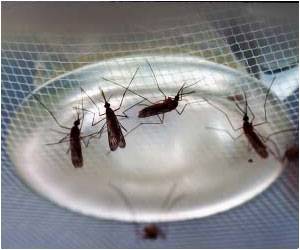Scientists find that a mosquito-borne virus that kills about half of the people it infects uses a never-before-documented mechanism to hijack one of the cellular regulatory systems of its hosts.

When the virus binds with the microRNA in certain cells involved in triggering an immune response in a human, it restricts its own replication. This allows the virus to evade an immune response because the viral replication in these cells is what would normally tip off the host's immune system and induce it to mount an attack to rid the body of the virus. Meanwhile, the virus is able to replicate and spread undetected in the cells of the host's neurological system and cause overwhelming disease. EEEV causes inflammation of the brain that begins with the sudden onset of headache, high fever, chills and vomiting and can quickly progress to disorientation, seizures and coma.
There is no treatment for the disease, but it is rare, with about five to 30 cases reported in the U.S. annually, according to the U.S. Centers for Disease Control and Prevention. It has a 30 to 70 percent fatality rate, the highest of any North American mosquito-borne virus, with significant brain damage in most survivors.It does not transmit easily to humans, and the mosquito species that typically carries it is usually found in swampy areas that aren't highly populated, though it has been found in more common mosquitoes, spurring pesticide spraying, curfews and outdoor event cancellations in recent years in states such as Massachusetts, where EEEV is more frequently found.
In the laboratory, Dr. Klimstra and his colleagues created a mutant version of EEEV without the microRNA binding site, which allowed them to discover that the binding site is key to the virus evading detection. When this manufactured mutant version was tested in the laboratory, the researchers found that the host's immune system was able to mount an effective response to the mutant virus. Dr. Klimstra added that the studies were mostly done in the Regional Biocontainment Laboratory at Pitt, a unique, high-security facility constructed with Pitt and NIH funds.
"Viruses are constantly evolving and changing," said Dr. Klimstra. "However, the genetic sequence that allows EEEV to bind to our microRNA has persisted. We find it in samples from the 1950s, which indicates tremendous evolutionary selection pressure to maintain this mechanism. Ultimately, these results suggest that the mutant virus could be used as an EEEV vaccine and that microRNA blockers could have potential for use as a therapeutic treatment for EEEV-infected patients who currently can be treated only with supportive care."
Source-Eurekalert










